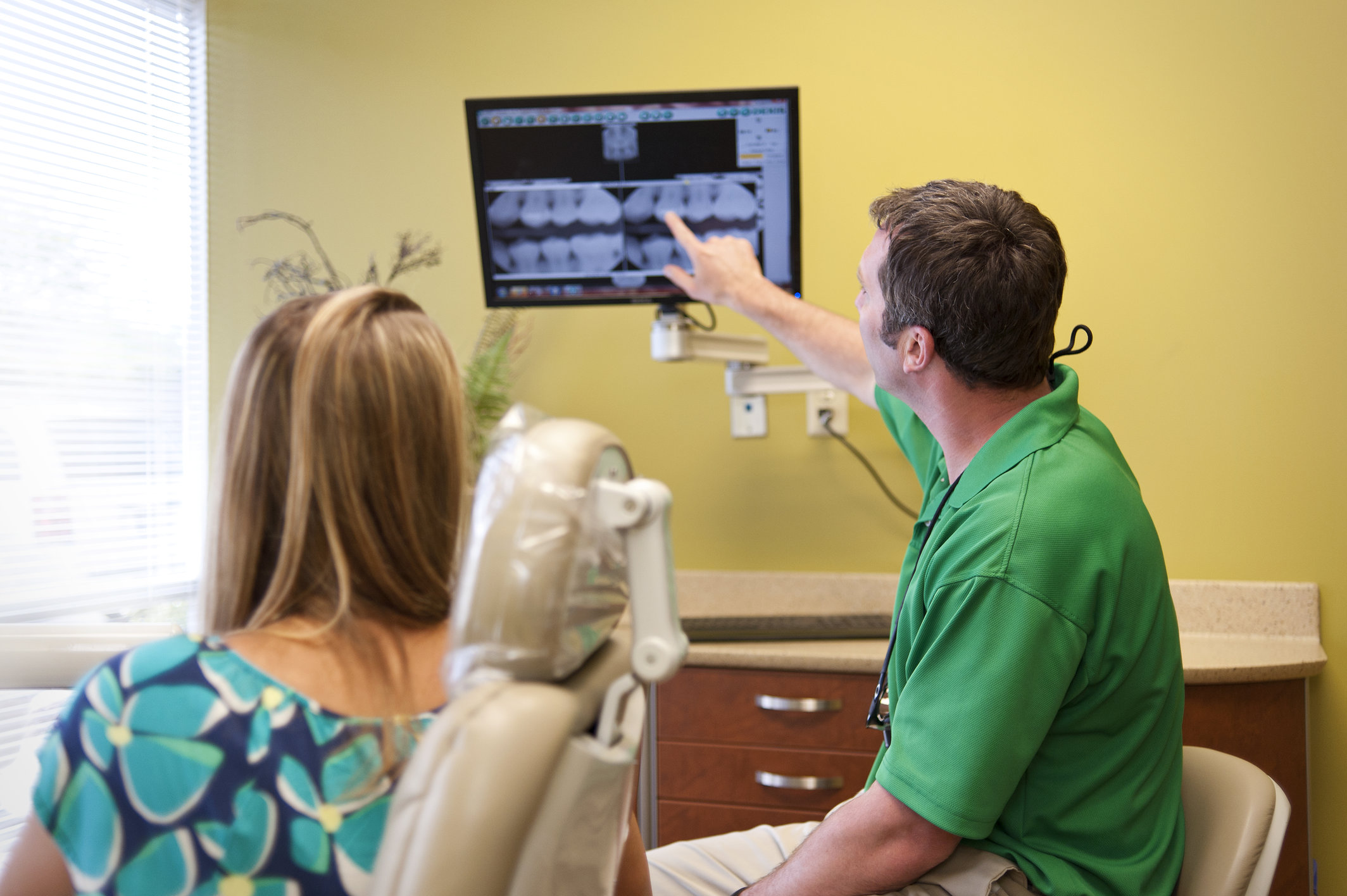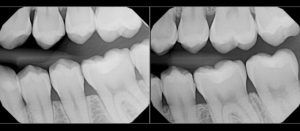The Purpose of Dental X-Rays
Have you ever wondered why your dentist needs x-rays (also called radiographs) when you visit for your routine dental cleaning and exam? There are several types of dental x-rays that are taken routinely in order to see different parts of your teeth and jaws. In this post we will discuss the most common types of dental x-rays, when we typically take them, and what we are looking for when we analyze them.
Bitewing X-Rays
There are 3 very common dental x-rays that we may take when you come in for your dental cleaning. The most common are referred to as bitewing x-rays. These are the x-rays where you have to bite down on the x-ray film while the photo is being taken. Bitewings are taken so that we can see decay in-between your teeth – a tricky area we can’t see with the naked eye . Typically 4 bitewing x-rays are taken in order to see all 4 quadrants of your mouth.
As your Richmond, VA dentist, we recommend taking bitewing x-rays once a year. If you have dental insurance then it is likely that your insurance will cover these annually. Take a look at what this bitewing x-ray looks like and notice how you can see between each tooth.
Panoramic X-Ray
Another common type of dental x-ray is a Panorex, or Panoramic X-Ray. Similar to a panoramic photo, a panorex is an image of your entire mouth. From this image we are able to see the presence of wisdom teeth, tumors, cysts, and abscesses. These are all things we wouldn’t not be able to see otherwise. Panoramic x-rays are also critical for orthodontic treatment in order to evaluate the health of roots, bone, and the development of permanent teeth.
Typically we recommend a panorex every 3-5 years, depending on the patient. A sample panoramic x-ray is pictured here. What do you think that is across the lower bottom teeth?
Periapical X-Ray
Periapical x-rays are more commonly known as PA’s. These dental x-rays focus on 1-2 teeth up close. If you are experiencing a toothache or if there is a suspicious looking area on one of your teeth, we would take a PA to get a better idea of what is going on. With these x-rays we are also able to see the root structure of the tooth as well.
We also recommend having periapical x-rays taken once a year when your 4 bitewing x-rays are taken. In this situation we would take them to evaluate the health of your front teeth, which are not included in the bitewing series. An example of this is on the right. Take note at how you can see the entire tooth and it’s roots up close in this x-ray.
Purpose of Dental X-Rays
As you can see, each type of dental x-ray that we take serves a very different purpose. It is important for us to have all the information we need in order to properly take care of your dental health.




